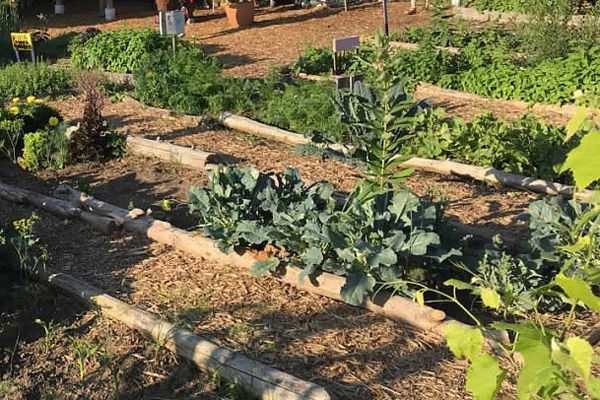Getting The City Blooming To Work
Getting The City Blooming To Work
Blog Article
City Blooming for Dummies
Table of ContentsOur City Blooming IdeasNot known Facts About City BloomingMore About City BloomingThe 20-Second Trick For City BloomingCity Blooming Things To Know Before You Buy
Interested in expanding food for sale in the City of Chicago? Below is a listing of frequently asked inquiries regarding the policies and regulations that growers ought to take into consideration when intending a city agriculture task.
The zoning change does not modify any kind of various other codes dealing with composting, building authorizations, buying or leasing City possessed building, business licenses or environmental contamination. There are existing codes that manage these issues and they stay completely effect and may be relevant to your task. Community gardens are normally had or managed by public entities, civic organizations or community-based organizations and maintained by volunteers.
Urban ranches grow food that is planned to be sold, either on a not-for-profit or for-profit basis. As a result of their industrial function, city farms need a business certificate. Yes. A community yard is allowed to offer excess generate that was grown on site if the sales are accessory or secondary to the garden's main function described above.
Getting My City Blooming To Work
Composting is allowed but only for plant product that is created and used on website. The quantity of garden compost material can not go beyond 25 cubic yards at any given time according to the criteria in 7-28-715 of the City's Municipal Code. Yes. Since the soil at a lot of new garden sites requires modifying, garden compost, dirt, wood chips, or various other materials can be obtained to create or enhance the growing area - City gardening.

If a structure permit is called for after that the hoophouse will be thought about an accessory building. You can figure out more about the structure permit demands by getting in touch with the Division of Buildings. The 25,000-square-foot size limitation is planned to protect against a single neighborhood yard from controling an offered block or diminishing the block's existing property or industrial character.
The restriction does not apply to yards situated in Public Open Space (POS) areas. Can there be even more than one area yard that is 25,000 square feet on a solitary block? Secure fencing is not called for, nonetheless, yards that have big car park locations might be required to set up fence or various other landscape design functions.
City Blooming Things To Know Before You Get This
B1 & B2 areas need that all business use tasks be carried out indoors. Is fencing needed for metropolitan ranches? Fences might be needed, along with landscaping and screening, for certain car parking locations and outdoor work or storage areas depending on place and the particular activity taking area.
Yes. Urban ranches need structure licenses and zoning authorizations before building and construction. Various other forms of city review might be called for relying on details frameworks, tasks, dimension, landscape design, licensing, public heath and stormwater management issues. Most of these requirements are identified in the project layout or permitting procedure, nonetheless, the candidate might be liable to separately identify specific licenses or allows that might be called for.
Yes. The kind of certificate is determined by what is occurring at the website. The Division of Organization Matters and Customer Defense can assist determine the certain kind of business permit that's called for. Yes. Off road car park is required for a lot of commercial projects in Chicago. The called for number of garage is based upon the number of workers functioning on site and not the square video of Visit Website the growing area.
City Blooming Can Be Fun For Anyone

Yes. An urban farm can offer garden compost product produced on website, however, the operation must abide by the policies in 7-28-715 of the Chicago Municipal Code. Yes. Aquaponic systems are enabled indoors on metropolitan ranches in several zoning areas. However, a zoning testimonial and structure permit is called for in order to mount structures or systems and an organization permit is called for as described above.
Up to 5 hives or swarms of honey bees might be kept as an accessory use. Beekeepers should sign up with the Illinois Division of Farming. For more details regarding the proposed zoning modification you may contact the Department of Housing and Economic Advancement, Bureau of Preparation and Zoning at 312.744.8563.
Farming in cities and urban areas A metropolitan farm in Chicago. Urban agriculture describes various methods of growing. https://danielnold94107.wixsite.com/my-site-1/post/city-gardening-a-green-oasis-in-urban-spaces, processing, and dispersing food in metropolitan locations. The term also relates to the area tasks of animal husbandry, aquaculture, beekeeping, and cultivation in a metropolitan context. Urban farming is differentiated from peri-urban farming, which occurs in rural locations at the side of suburbs.
The Best Strategy To Use For City Blooming
, who look for to develop social networks started on a shared ethos of nature and area holism. These networks can establish by way of formal institutional assistance, coming to be integrated into regional town planning as a "change community" movement for lasting metropolitan advancement.
In either instance, the extra direct accessibility to fresh vegetable, fruit, and meat items that may be understood with urban farming can boost food safety and security and food security while lowering food miles, leading to reduced greenhouse gas exhausts, thus adding to environment adjustment mitigation. Several of the first evidence of city agriculture comes from Mesopotamia.
Report this page